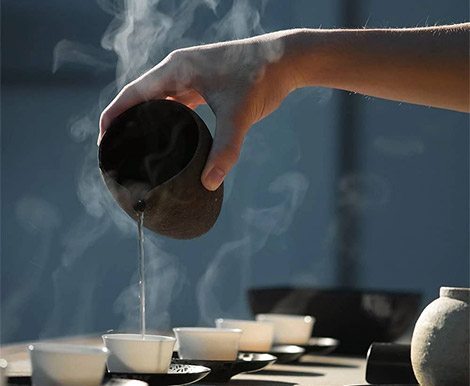24th Jul 2015
What everyone ought to know about tea...
In 2012, over 65% of the tea brewed in the United States was prepared using tea bags. That is a lot of tea! And the trend continues as WorldTeaExpo.com predicts that tea sales will surpass coffee sales by the year 2017. Tea is already the most common consumed beverage in the world aside from drinking water. So why does everyone love tea? The health benefits? The taste? The wide selection? Tea is just like wine in the fact that each tea has a region that it comes from and a unique profile taste from the region. Similar to how grapes from France may taste different than grapes from Napa Valley. Aside from that fact, all ârealâ tea comes from the plant camellia sinensis. When I say ârealâ to true teas and not herbal teas. Although most people donât know the difference, an herbal tea is tisane is actually a tea made with flowers, herbs and other natural ingredients. These teas can be just as healthy and are often used for specific purposes or to achieve an ingredient profile that wouldnât be possible using camellia sinensis. Black tea â Most commonly used in the US for iced tea. This tea has more caffeine than any of its sisters. Black tea typically comes from 5 countries: China, Taiwan, India, Sri Lanka, and Nepal. After picking the tea is processed by blowing air, or withering, and then left to oxidize. Green tea â The fastest growing segment in the U.S. is Green tea. There are many, many different types of green tea. One of the most popular and trending blends in the U.S. is called matcha. It is completely different from any other type of green tea because you put matcha powder directly into the hot water. The health benefits are well documented and research continues on green tea. Although all teas are full of antioxidants, green tea is generally regarded as being the healthiest. Oolong Tea â Roughly translated to mean âblack dragonâ in Chinese, Oolong tea is processed as soon as the leaves are picked. The leaves may lay out for 2 hours and then traditionally taken to a wok. The leaves are then fired. Oolongs have many flavor profiles from deep and earthy to light and fruity. White Tea â The least processed of all tea is white tea. Shockingly, white tea typically tends to be slight shade of yellow. White tea flavors tend to easier on the palate with fruit, honey, and flowers being the most prominent features. However, you can find white tea with cocoa and wood flavors as well. Pu-erh Tea â This dark tea is fermented after the tea is dried. It produces a rich, dark, very earthy flavor. The tea has a very long history and is at one point was actually used as currency. Old âbricksâ of this type of tea can go for very large amounts of money. Herbal Tea or Tisanes â These types of teas are typically made from natural ingredients. Most of the time herbal teas are caffeine and gluten free. They can be made from hibiscus, fruit, peppermint, spearmint, rose hips, orange peel, rosemary, Missouri snake root, and the list goes on and on. Most of the time the ingredients are mixed together to create an herbal tea concoction that is used for a specific purpose. For instance, chamomile teas are used for relaxation and to induce sleep. Teas with muira puama may be used to increase blood flow. Teas with Missouri snake root (Echinacea) are often drank to combat colds. No matter what type of tea you try, there are so many different flavors and benefits you are sure to find one that you like.

